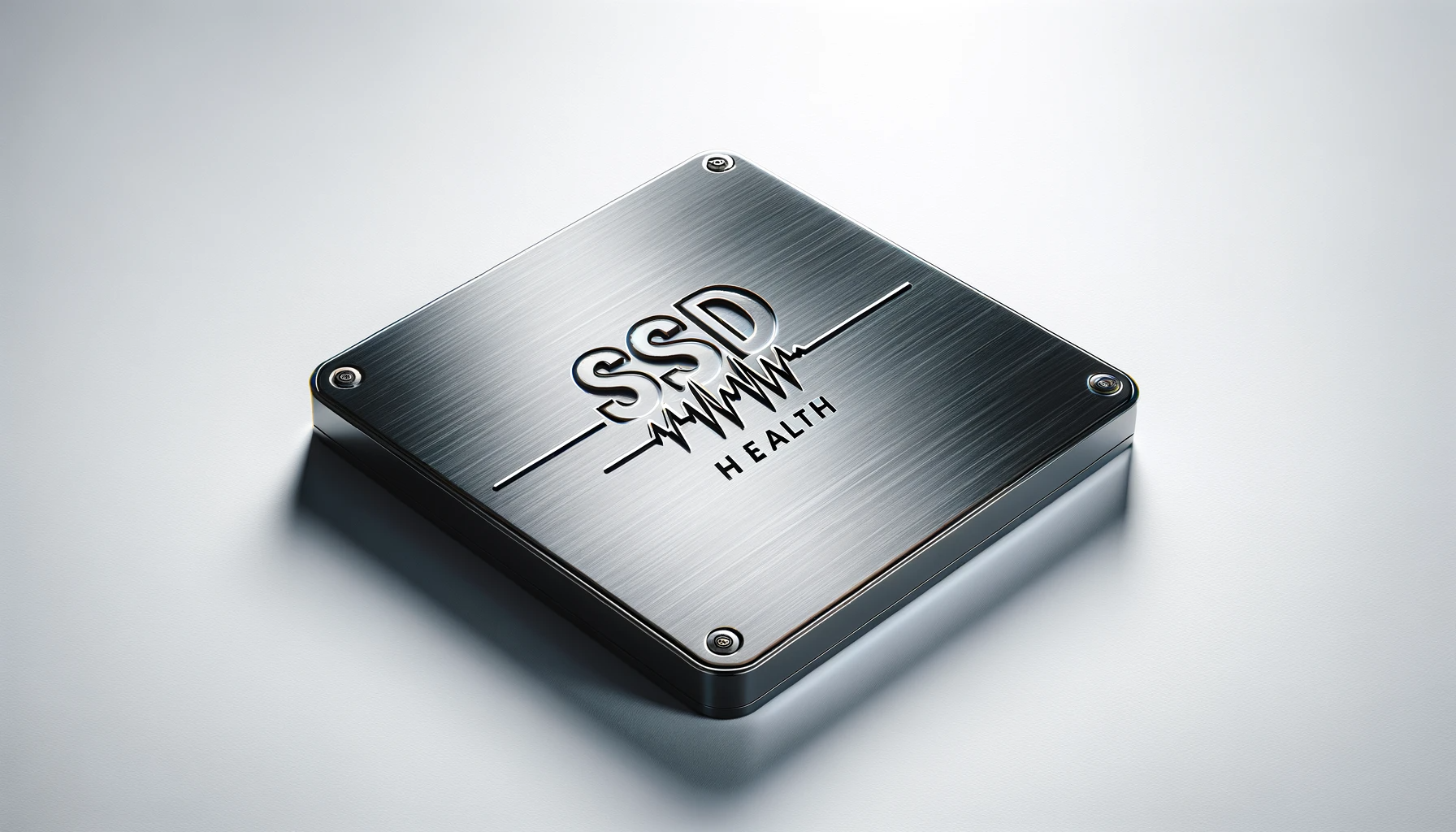How to Test SSD Health
Just like HDDs, SSDs also experience wear and tear over time, so it's crucial to regularly monitor their health and performance.
In this guide, we'll walk you through the steps to assess the condition of an SSD on Windows, Mac, and Linux platforms using different tools and techniques.
Short answer:To check the health of your SSD on Windows, Mac, and Linux, use programs and utilities such as CrystalDiskInfo for Windows, Disk Utility for Mac, and smartctl for Linux, which analyze various disk parameters, including read/write speed, wear, SMART attributes, and more.
- How to Check SSD Health on Windows
- How to Test SSD Health on Mac
- Linux Check SSD Health
- How to Test SSD Health: Comparative Table
- How to Test SSD Health: Frequently Asked Questions
How to Check SSD Health on Windows

On Windows, third-party applications can be used to evaluate your SSD's health. CrystalDiskInfo is a popular choice, providing detailed information on SSD attributes such as temperature, wear, SMART status, and more.
Here how to use CrystalDiskInfo:
- Download and install CrystalDiskInfo from its official website.
- Open the application and select your SSD from the drive list at the top.
- Check the "Health Status" displayed; it could be "Good," "Caution," or "Bad." If it indicates "Caution" or "Bad," this suggests potential wear issues or damaged sectors, possibly warranting a replacement or repair.
- Examine additional SSD parameters like temperature, uptime, and total data written. These insights can help assess your SSD's overall reliability.
How to Test SSD Health on Mac

In Mac, you can use the built-in utility called Disk Utility to check and repair disks on your computer. To use this utility, follow these steps:
- Open Finder and navigate to the "Applications" section.
- Double-click on the "Utilities" folder and find the "Disk Utility" application.
- Launch the application and select your SSD from the list of drives on the left side of the window.
- Click the "First Aid" button at the top of the window.
- Click the "Run" button to start checking your SSD for errors.
- Wait for the check to complete and review the results. If your SSD has no errors, you will see a "Operation successful" message. If your SSD has errors, you will see a "Repairing disk failed" message along with recommendations for further actions.
Linux Check SSD Health

On Linux, you can check the health of your SSD using the smartctl command, which is part of the smartmontools package. Here's how to do it:
- Open a terminal and install smartmontools if it isn't already. For Ubuntu and Debian, use `sudo apt install smartmontools`. For Fedora and CentOS, use `sudo yum install smartmontools`.
- Find your SSD's name using `lsblk`, which lists all disks and partitions. SSD names typically start with /dev/sd, like /dev/sda or /dev/sdb.
- Run the smartctl utility with the -a option and your SSD's name. For example: `sudo smartctl -a /dev/sda`. This will display detailed information about your SSD, including model, serial number, SMART attributes, and more.
- Check the "SMART overall-health self-assessment test result," which can show "PASSED," "FAILED," or "UNKNOWN." A "FAILED" or "UNKNOWN" status suggests potential issues, indicating the need for repair or replacement.
- Examine other parameters like temperature, uptime, and total data written. These insights help gauge the SSD's reliability and its impact on system performance.
How to Test SSD Health: Comparative Table
This table compares methods for checking the health of SSD in different operating systems - Windows, Mac and Linux:
| Criterion | Windows | Mac | Linux |
|---|---|---|---|
| Data Read and Write Speed | Depends on the type of SSD, file system, and drivers. Typically high for NVMe SSDs and low for SATA SSDs. | Depends on the type of SSD, file system, and drivers. Typically high for NVMe SSDs and average for SATA SSDs. | Depends on the type of SSD, file system, and drivers. Typically high for NVMe SSDs and SATA SSDs. |
| Wear and Degradation | Depends on the quality of the SSD, amount of data written, and the presence of TRIM and GC technologies. Typically low for high-quality SSDs with TRIM and GC support. | Depends on the quality of the SSD, amount of data written, and the presence of TRIM and GC technologies. Typically average for high-quality SSDs with TRIM and GC support. | Depends on the quality of the SSD, amount of data written, and the presence of TRIM and GC technologies. Typically low for high-quality SSDs with TRIM and GC support. |
| Security and Error Protection | Depends on the type of SSD, file system, and drivers. Typically high for NVMe SSDs with ECC support and low for SATA SSDs without ECC support. | Depends on the type of SSD, file system, and drivers. Typically high for NVMe SSDs with ECC support and average for SATA SSDs with ECC support. | Depends on the type of SSD, file system, and drivers. Typically high for NVMe SSDs with ECC support and SATA SSDs with ECC support. |
| Ease of Checking | Depends on the availability of third-party programs to check the SSD's condition. Typically average for users who can install and run such programs. | Depends on the availability of built-in utilities to check the SSD's condition. Typically high for users who can use Disk Utility. | Depends on the availability of the command line to check the SSD's condition. Typically low for users who are not familiar with terminal commands and smartctl. |
How to Test SSD Health: Frequently Asked Questions
How can I determine the type of SSD installed in my system?
You can identify the type of SSD in your system by examining its physical structure or using software tools. There are mainly two types of SSDs: NVMe and SATA.
NVMe SSDs are compact and connect to an M.2 slot on the motherboard, while SATA SSDs are larger and connect to a SATA port on the motherboard or within a laptop's chassis.
Tools like CrystalDiskInfo or Open Hardware Monitor can help determine your SSD type.
How can I check the data read and write speed of my SSD?
To evaluate your SSD's read and write speeds, you can use disk performance testing software. CrystalDiskMark is a recommended tool for this purpose.
Simply download and install it, launch the program, select your SSD, and start the tests. The results will show your SSD's read and write speeds in megabytes per second.
How can I optimize the performance of my SSD in Windows, Mac, or Linux?
Optimizing your SSD performance involves several steps:
- Enable TRIM Support: This helps the OS inform the SSD which data blocks are unused. For Windows, use `fsutil behavior set DisableDeleteNotify 0` in the Command Prompt as an administrator. Mac handles this automatically, while in Linux, use `sudo fstrim -v /` or update the `/etc/fstab` file;
- Disable Unnecessary Services: Turn off features like hibernation, file indexing, disk defragmentation, and system restore points. This varies based on your operating system;
- Choose the Right File System: For Windows, NTFS is recommended; for Mac, APFS; and for Linux, EXT4 or BTRFS;
- Monitor Free Space: Keep your SSD's usage below 80% for optimal performance. Tools like WinDirStat[^5^][8] or Disk Inventory X can help manage disk space.
How to Test SSD Health: Conclusion

Throughout this article, we've guided you through the process of checking an SSD's functionality on Windows, Mac, and Linux, utilizing various tools and techniques.
Whether you're use your SSD for video editing or a casual use, understanding how to maintain and troubleshoot your SSD can lead to a more reliable and efficient workflow. We trust that this information has been both helpful and enlightening for you.
You may also like:
